Kandan Ramakrishnan
Generalization properties of contrastive world models
Dec 29, 2023Abstract:Recent work on object-centric world models aim to factorize representations in terms of objects in a completely unsupervised or self-supervised manner. Such world models are hypothesized to be a key component to address the generalization problem. While self-supervision has shown improved performance however, OOD generalization has not been systematically and explicitly tested. In this paper, we conduct an extensive study on the generalization properties of contrastive world model. We systematically test the model under a number of different OOD generalization scenarios such as extrapolation to new object attributes, introducing new conjunctions or new attributes. Our experiments show that the contrastive world model fails to generalize under the different OOD tests and the drop in performance depends on the extent to which the samples are OOD. When visualizing the transition updates and convolutional feature maps, we observe that any changes in object attributes (such as previously unseen colors, shapes, or conjunctions of color and shape) breaks down the factorization of object representations. Overall, our work highlights the importance of object-centric representations for generalization and current models are limited in their capacity to learn such representations required for human-level generalization.
Large Scale Neural Architecture Search with Polyharmonic Splines
Nov 20, 2020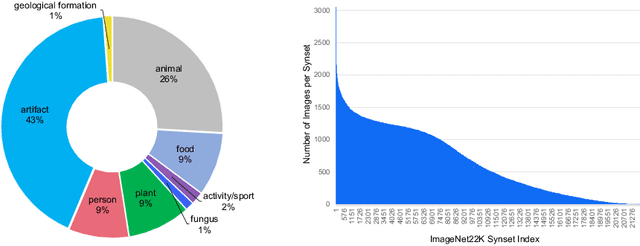
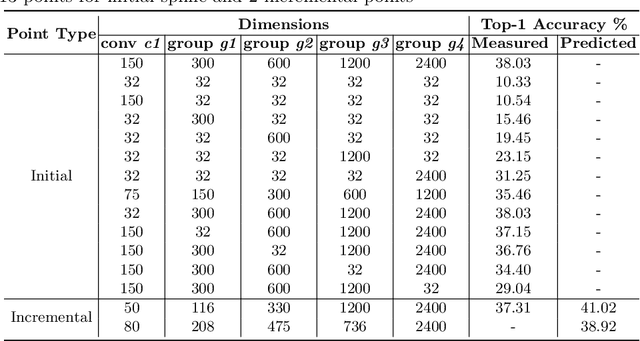

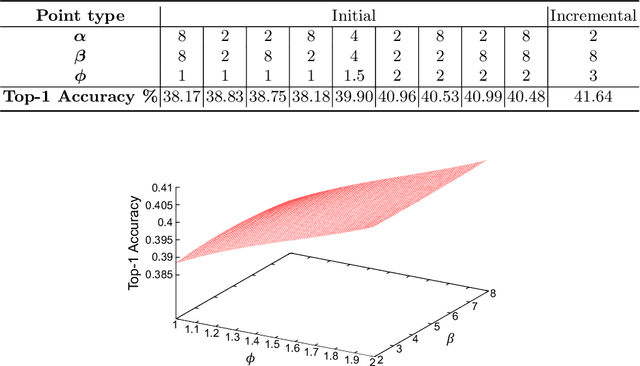
Abstract:Neural Architecture Search (NAS) is a powerful tool to automatically design deep neural networks for many tasks, including image classification. Due to the significant computational burden of the search phase, most NAS methods have focused so far on small, balanced datasets. All attempts at conducting NAS at large scale have employed small proxy sets, and then transferred the learned architectures to larger datasets by replicating or stacking the searched cells. We propose a NAS method based on polyharmonic splines that can perform search directly on large scale, imbalanced target datasets. We demonstrate the effectiveness of our method on the ImageNet22K benchmark[16], which contains 14 million images distributed in a highly imbalanced manner over 21,841 categories. By exploring the search space of the ResNet [23] and Big-Little Net ResNext [11] architectures directly on ImageNet22K, our polyharmonic splines NAS method designed a model which achieved a top-1 accuracy of 40.03% on ImageNet22K, an absolute improvement of 3.13% over the state of the art with similar global batch size [15].
Deep Analysis of CNN-based Spatio-temporal Representations for Action Recognition
Oct 23, 2020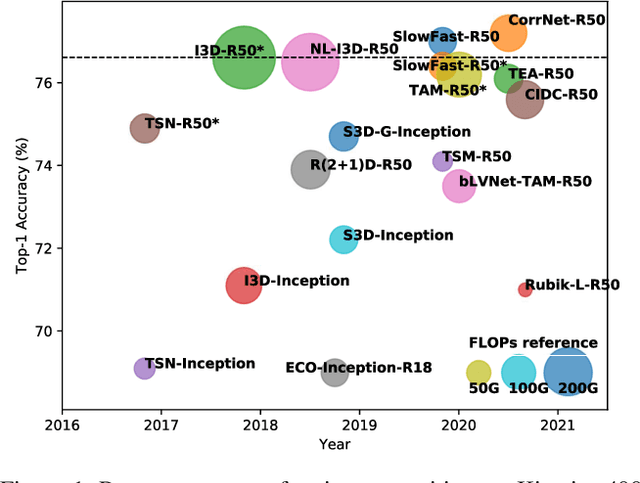

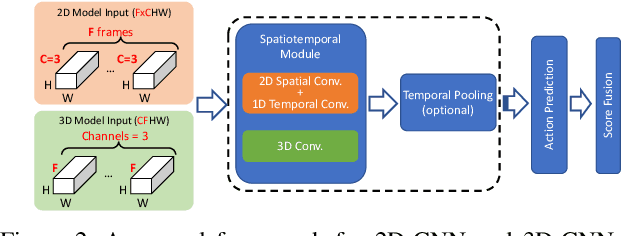
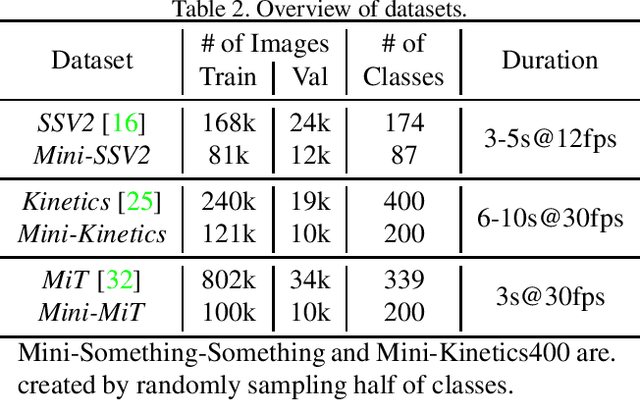
Abstract:In recent years, a number of approaches based on 2D CNNs and 3D CNNs have emerged for video action recognition, achieving state-of-the-art results on several large-scale benchmark datasets. In this paper, we carry out an in-depth comparative analysis to better understand the differences between these approaches and the progress made by them. To this end, we develop a unified framework for both 2D-CNN and 3D-CNN action models, which enables us to remove bells and whistles and provides a common ground for a fair comparison. We then conduct an effort towards a large-scale analysis involving over 300 action recognition models. Our comprehensive analysis reveals that a) a significant leap is made in efficiency for action recognition, but not in accuracy; b) 2D-CNN and 3D-CNN models behave similarly in terms of spatio-temporal representation abilities and transferability. Our analysis also shows that recent action models seem to be able to learn data-dependent temporality flexibly as needed. Our codes and models are available on https://github.com/IBM/action-recognition-pytorch.
NASTransfer: Analyzing Architecture Transferability in Large Scale Neural Architecture Search
Jun 23, 2020
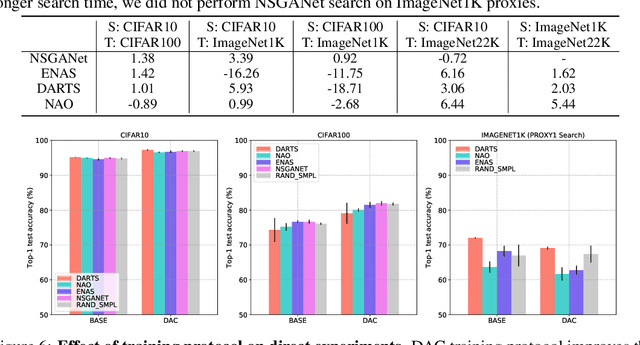
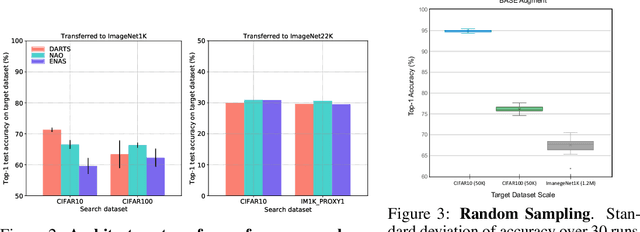

Abstract:Neural Architecture Search (NAS) is an open and challenging problem in machine learning. While NAS offers great promise, the prohibitive computational demand of most of the existing NAS methods makes it difficult to directly search the architectures on large-scale tasks. The typical way of conducting large scale NAS is to search for an architectural building block on a small dataset (either using a proxy set from the large dataset or a completely different small scale dataset) and then transfer the block to a larger dataset. Despite a number of recent results that show the promise of transfer from proxy datasets, a comprehensive evaluation of different NAS methods studying the impact of different source datasets and training protocols has not yet been addressed. In this work, we propose to analyze the architecture transferability of different NAS methods by performing a series of experiments on large scale benchmarks such as ImageNet1K and ImageNet22K. We find that: (i) On average, transfer performance of architectures searched using completely different small datasets perform similarly to the architectures searched directly on proxy target datasets. However, design of proxy sets has considerable impact on rankings of different NAS methods. (ii) While the different NAS methods show similar performance on a source dataset (e.g., CIFAR10), they significantly differ on the transfer performance to a large dataset (e.g., ImageNet1K). (iii) Even on large datasets, the randomly sampled architecture baseline is very competitive and significantly outperforms many representative NAS methods. (iv) The training protocol has a larger impact on small datasets, but it fails to provide consistent improvements on large datasets. We believe that our NASTransfer benchmark will be key to designing future NAS strategies that consistently show superior transfer performance on large scale datasets.
Multi-Moments in Time: Learning and Interpreting Models for Multi-Action Video Understanding
Nov 04, 2019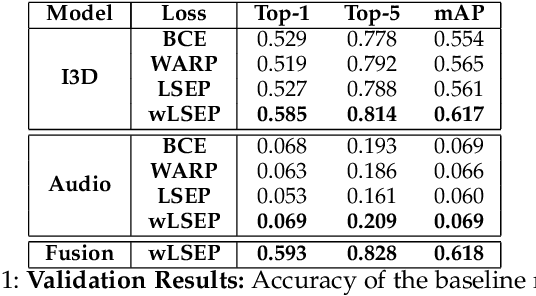
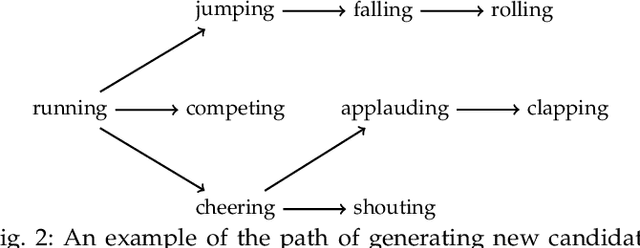


Abstract:An event happening in the world is often made of different activities and actions that can unfold simultaneously or sequentially within a few seconds. However, most large-scale datasets built to train models for action recognition provide a single label per video clip. Consequently, models can be incorrectly penalized for classifying actions that exist in the videos but are not explicitly labeled and do not learn the full spectrum of information that would be mandatory to more completely comprehend different events and eventually learn causality between them. Towards this goal, we augmented the existing video dataset, Moments in Time (MiT), to include over two million action labels for over one million three second videos. This multi-label dataset introduces novel challenges on how to train and analyze models for multi-action detection. Here, we present baseline results for multi-action recognition using loss functions adapted for long tail multi-label learning and provide improved methods for visualizing and interpreting models trained for multi-label action detection.
The Algonauts Project: A Platform for Communication between the Sciences of Biological and Artificial Intelligence
May 14, 2019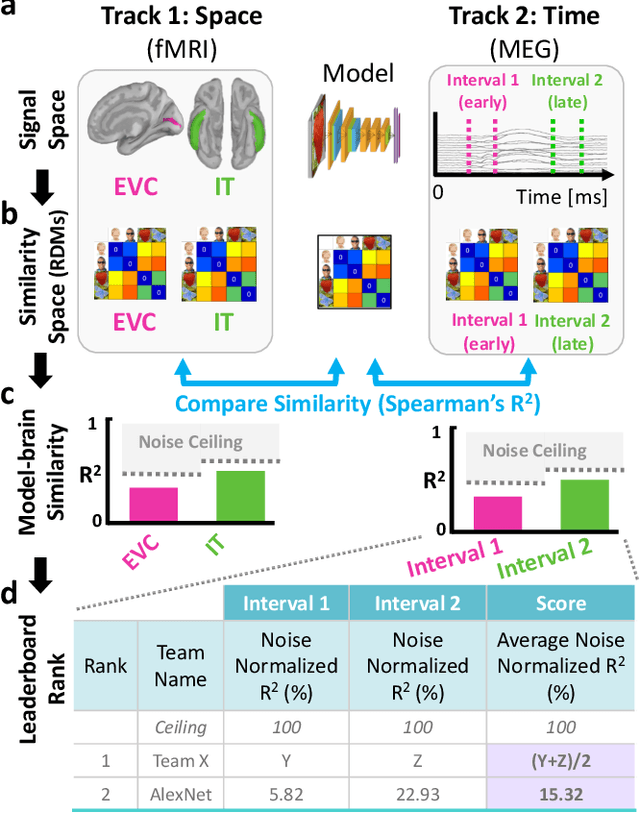
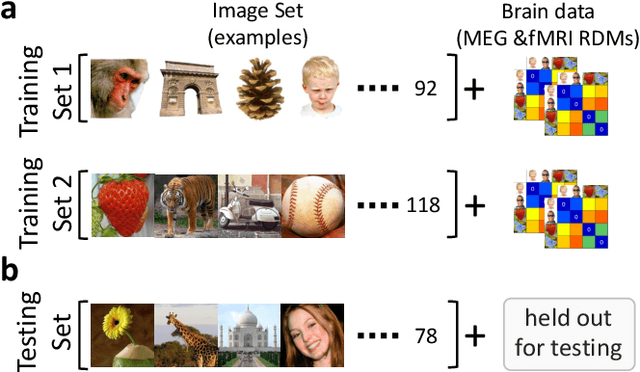
Abstract:In the last decade, artificial intelligence (AI) models inspired by the brain have made unprecedented progress in performing real-world perceptual tasks like object classification and speech recognition. Recently, researchers of natural intelligence have begun using those AI models to explore how the brain performs such tasks. These developments suggest that future progress will benefit from increased interaction between disciplines. Here we introduce the Algonauts Project as a structured and quantitative communication channel for interdisciplinary interaction between natural and artificial intelligence researchers. The project's core is an open challenge with a quantitative benchmark whose goal is to account for brain data through computational models. This project has the potential to provide better models of natural intelligence and to gather findings that advance AI. The 2019 Algonauts Project focuses on benchmarking computational models predicting human brain activity when people look at pictures of objects. The 2019 edition of the Algonauts Project is available online: http://algonauts.csail.mit.edu/.
Moments in Time Dataset: one million videos for event understanding
Jan 09, 2018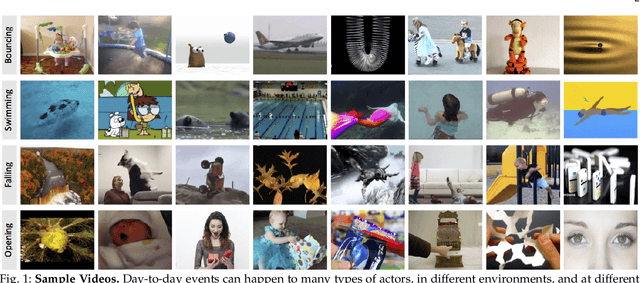
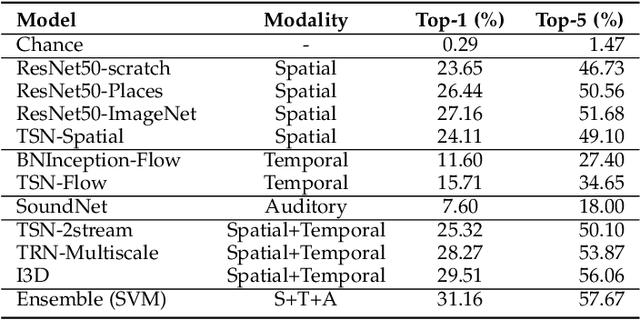
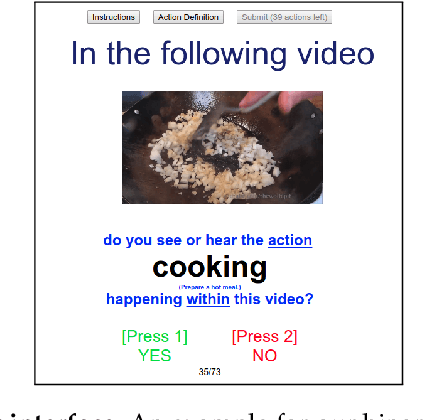
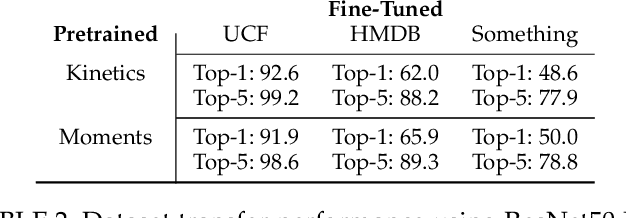
Abstract:We present the Moments in Time Dataset, a large-scale human-annotated collection of one million short videos corresponding to dynamic events unfolding within three seconds. Modeling the spatial-audio-temporal dynamics even for actions occurring in 3 second videos poses many challenges: meaningful events do not include only people, but also objects, animals, and natural phenomena; visual and auditory events can be symmetrical or not in time ("opening" means "closing" in reverse order), and transient or sustained. We describe the annotation process of our dataset (each video is tagged with one action or activity label among 339 different classes), analyze its scale and diversity in comparison to other large-scale video datasets for action recognition, and report results of several baseline models addressing separately and jointly three modalities: spatial, temporal and auditory. The Moments in Time dataset designed to have a large coverage and diversity of events in both visual and auditory modalities, can serve as a new challenge to develop models that scale to the level of complexity and abstract reasoning that a human processes on a daily basis.
 Add to Chrome
Add to Chrome Add to Firefox
Add to Firefox Add to Edge
Add to Edge